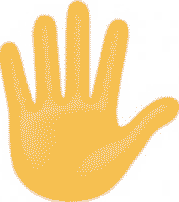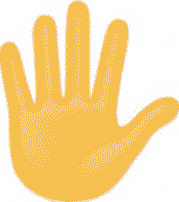Homeopathy
WHAT HOMEOPATHY IS
Homeopathy is a therapy born from the efficiency, before prejudices and criticism, without efficiency it would not have been followed up and it would not have been held in high esteem. If Hannemann, German doctor who discovered homeopathy, did not reach any therapeutic success, he would not have created any answer, but before he reached those successes, he obtained tangible results through the application of a scientific method, that is for instance the “double blind” proving trial. Only after those results the doctrine and philosophy of similars spread itself, it is true that the previous medical philosophical schools saw the same philosophy coming, since they attributed to the human soul the perturbations which tormented the sick person, tracing back the treatment to an individualist and peculiar condition of the disease itself, and the only way to do so was to focus on the philosophy “of the whole”, which means that the individual had to be rediscovered in its uniqueness-totality. So, the disease does not involve any organ or apparatus due to the damage or the contamination, but a process of altered reactivity to external stimuli mediated by the interpretation of the individual and of his background. There are hundreds of thousands of scientific studies proving the efficiency of homeopathic dilutions in the proving trials, and they do not have to be discussed here, there are known physicists, chemists and biologists who proved their efficiency, but their works are not published on official magazines, since also editorial pressures work in favour of an opposed politics, and making holism official means destabilizing the citizen and the consumption by those people addicted to medicines. The homeopathic dilution is at the core of the controversy. It is just like asking a deaf person to describe music, they talk about medicine but homeopathy goes hand in hand with quantum physics. However the law on patents allows to patent “a substance whose chemical structure is still unknown but its effects are known...” for homeopathy, since they are interactions modifying the water molecule, which is the most important conveyor and container of information other than the basis of life, the exact dynamic is unknown in its intimate details. So, the problem has an epistemological origin, in other words science shows a lack which it prefers to deny, when certain answers are not available, in order not to go into fideism, science is diametrically opposed to that. Hannemann proposed the soluble mercury to treat syphilis, he tried to make mercury less toxic by adding water, he wanted to find a curative way through the scientific method by lowering the toxicity of the medicine itself, just like the cancer specialist chooses to adjust chemotherapy according to the patient conditions, but since he is in danger of being controlled he is forced to apply the protocol saving him from the legal consequences but he kills himself and the patient with a very strong poison. The big mistake by Hanneman, if we can say so, was that he opted for the mathematical choice of the dilution criteria. If instead of 1 : 100, which is the CH or centesimal hahnemannian, he chose the halving criteria, that is 1:2, no one would have noticed the presence of the chemical in the dilutions. You will observe then how any metric reference is part of history and of a culture of fairness. From the atomic halving, to the D.L. 50, to the equation, our mathematical, geometric, chemical philosophy is about half the dose, half means dividing endlessly but never disappearing, it is a thin concept but it reinforces those certainties which the human being renews on a regular basis, in order not to disconnect from reality. He would have overcome the Avogadro number without any discussions, everyone would have been sure that even if it was halved there was something inside it. Dilutions for sure would have changed just like succussions, but the problem of the absence of material would have been solved silently. At the end of his brilliant career Hannemann, having obtained many certainties and successes, tries the LM, that is the 50 centesimal, and you will see how in a different but similar way, the mathematic term fifty appears, which is half of a hundred. Anyone who approaches homeopathy and holistic philosophy feels like he belongs to it, because it proposes the most individualized treatment possible. Every individual, like any decayed king, would like to have his merits recognized, conquests, sentences, canticles and loves. Nowadays in the post-modern era, the return to holism is a socio-anthropological need after the totalitarianisms of the xx° century killed 4% of the world population, after the illusion of communism “made us equal just as consumers”, like Eco states, and after that the mass standardization, the stereotypy and the “vegetative collectivism” made the human being equally unsatisfied depriving him of any characteristic of authenticity. The rediscovery of biodiversity and subcultures, as identities essential for the renewal, are looking for the best representations to describe the uniqueness of each and every individual who is not alone under a spacial point of view any more and he is also looking for a redemption showing the peculiar richness within his uniqueness. Everyone of us is a champion in some discipline, maybe only at a provincial level, but if we live in a simple way it is enough for us, but we would like someone to tell us we are champions, after the fact that mass phenomenon oppressed him and after that media phenomena forced him to be a mere spectator even more and in an unidirectional way. Customizing diets, training, injury policy, consumption rate, runs on the same track that the treatment path traced centuries before, since it is linked to the individual in a more intimate way. Holism comes into contact with all true man looking for the truth. The person absolutism as an intrinsic value, shows even more how rediscovering oneself, far away from individualism and egocentrism, becomes a way of re-evaluating the human being as such, with proactive implications of ethic and philosophy. Just like any cell, even if it is part of an organism, is affected by the impulses generated by the receptor cells, each and every individual, even if he is part of a community, needs the right impulse adapting to him in a specific way only through locating the nature of the similar stimulus. If phenomenon linked to the use of low-dose medicines are not entirely clear, according to a mechanistic method, it does not mean that they are inefficient or that they do not have to be prescribed, at all. After all even most of the common medicines are absolutely unknown, the well-known mechanism of action is unknown as far as the 80% of the active principles is concerned, and if we presume to know the pharmacological process, we find out, like it is happening now, that according to the criteria chosen for the explanation, they prove to be absolutely incongruous. All of this, according to scientific epistemological criteria, leads to mystification, which means that we attribute effects or successes to phenomena that happen in a completely different way. Socrates' admission of his own ignorance, but the use of remedies when there are no side effects, pushes to search for a definite explanation, while the use of substances having serious side effects, other than showing that they are unsuccessful, makes us wonder about why it is toxic and also about the efficiency mystified by an incongruous and paradoxical explanation. Excluding the common way of thinking is not the right way of facing the open and mysterious dialogue on the effects of the world outside and inside our controversial self. The other part of Hannemann's brilliant expressiveness is shown by the definitions of diathesis. Diathesis, in other words the predisposition of the body to a disease, is an anthropological observation classifying and describing human types into categories based on the picture of external expressions of mind and body, in the form of symptoms presenting as a portrait of disease and on the reaction to the remedy. He classifies human beings into three types of diathesis: psoric, sycotic, luetic individuals. The classification is done on the basis of clinical signs he considered noteworthy, and those are the inheritance of multiple infections in the history of a patient, caused by microbes which left a morphofunctional mark on the susceptible subjects: psoric individuals with scab, sycotic individuals with gonorrhea and luetic individuals with syphilis. This allows the practitioner to make sense of the history of the patient and which specific symptoms or tendencies must be treated. These descriptions are still used today, since they allow us to recognize such prerogatives and the possible integrations, both at a subjective level and of a social nature. Psora corresponds to childhood-adolescence, in which manifestations are still at an elementary or superficial stage, pure emotions prevail, fear, anxiety, anxiousness, sensibility, superficial forms and fast symptoms and fast recovery. Then we have sycose that is the maturity stage with the tendency to rationalize energies, reaching goals and the tendency for absolutisms to prevail, on the physical side we see a sclerosis of structures, hypertrophies of what has not been overcome in a psoric way, a chronicization, fixity of ideas and of the thought somatizing in the organs, in a positive and negative sense, on the one hand there is evaluation on an individual level, on the other hand there is the loss of flexibility, less adaptability. In conclusion there is the lue, that is destruction, the leutic individual has a strong self-destructive behaviour, the ulceration phase comes after the long healing phase taking place during the sycotic stage, and makes it vain, the loss of matter comes along with the symptoms, there is low vital energy or it is headed towards the wrong direction, there is chaos in the mind just like there is chaos in the healing processes, the attempts to reconstruct the tissues are neutralized by the self-destructive behaviour, by the breakdown, by the will of a painful death, the communication is lost and the delirious stage and insanity starts, it is the old age. These stages are pivotal in order to direct the study of sensible remedies but for those who are not experts, it is the most elementary way to distinguish the therapeutic responses, that is the responses to a medicine, on the basis of the vital energy of the sick person, into three following responses:
PSORIC INDIVIDUALS-----------react to the majority of medicines, both chemical and physical, due to their hypersensitivity they are subjected to side effects and they are forced then to reduce the use of medicines. Side effects manifest themselves mainly on the skin, which is their organ of contact and communication, through rashes, itching, eczemas, acne, alopecia, psoriasis, dermatitis etc. Placebo effect is perceived by these individuals to be more effective.
SYCOTIC INDIVIDUALS-----------------due to the decrease of vital energy, they tend not to solve the conflict causing the disease so they tend to make it become chronicle, tissues become atrophic and tough, warts, cutaneous tumours, sclerosis, hardening, fixations, they coexist with the disease, it becomes a form of social acceptance and of justification. THEY ARE THE BIGGEST CONSUMERS OF MEDICINES, the low vital energy makes them draw from the medicine that drive they need in order to react, since they cannot react any more, they lost their Darwinian drive for survival and reproductive success, they go towards extinction, they do not look for other solutions since they do not want to recover, the chemical medicine with its part of pain, justifies this indolence to change they have, they live for the medicine and with the medicine, they accept and tolerate cycles of chemotherapy, they expiate this nature in “pharmacological masochism”, recovery scares them since it is something new, they can even live long in their pain, death comes slowly, they can survive during long hospital days and burn out like candles, their addiction to the medicine decreases the toxicity of it, which from absolute turns into relative, absence of side effects.
LUETIC INDIVIDUALS--------------luetic people are those who embarked on the wrong track, they use high vital energy the wrong way, they are psoric decompensated individuals heading towards insanity or self-destructive behaviours, in the movements, in the behaviours, they show signs of morpho-functional imbalance, out of reality, dreamers or self-destructive people, alcohol addicted people, drug-addicted people, criminals, they have low consideration of reality, they are apparently calm, but they run a risk in everything they do, in the social dynamics, relationships, job, the component of imbalance is always there. They get sick from forms destructing the organic matter, ulceration, incurable diseases, terminal cancer stages, even if these individuals look healthy from the outside, inside they are exhausted, devastated by unsolved tragedies, they go from one problem to the next without solving any of them, it is called “schizophrenic constellation”, they promise and never stand by what they said, they are in a mental chaos, they do not have points of reference and of resolution, they are excessively altruistic or pathologically selfish people, they are childish, artists whose body is worn-out by alcohol, they have disharmonious bodies, they get sick and die prematurely from deadly incurable diseases like their drama which stays mysterious, like a childish play with hyperbolic rules, ANSENCE OF PHARMACOLOGICAL EFFECTS: NOCEBO EFFECT, their conviction makes medicines ineffective, at most those related to their path work, such as drugs, side effect which kills them: luetic. There are mixed forms where one diathesis prevails, what we are interested in and what allows a striking explanation that only homeopathy holds, is this vision of innate prerogatives which makes the endless human features and the disease features full of interpretations.
David Satanassi, veterinary surgeon, graduated in Classical Homeopathy, graduated in Bioethics.
Siti amici
Informazioni
MEDICO VETERINARIO (BO '91) - Diplomato in Omeopatia Classica presso Società Medica di Bioterapie (RM) - Diploma Master Bioetica presso Università Pontificia Regina Apostulorum (RM) - Corsi in Medicina Biologica-Nuova Medicina presso Università Popolare (MI). - Copyright © 2011 -
Credits
Privacy Policy
Resta in contatto
Uso dei cookie
davidsatanassi.com utilizza i "Cookie" per rendere i propri servizi semplici e efficienti per l’utenza che visiona le pagine di davidsatanassi.com. Gli utenti che visionano il Sito, vedranno inserite delle quantità minime di informazioni nei dispositivi in uso, che siano computer e periferiche mobili, in piccoli file di testo denominati “cookie” salvati nelle directory utilizzate dal browser web dell’Utente. Vi sono vari tipi di cookie, alcuni per rendere più efficace l’uso del Sito, altri per abilitare determinate funzionalità. Analizzandoli in maniera particolareggiata i nostri cookie permettono di:
- memorizzare le preferenze inserite
- evitare di reinserire le stesse informazioni più volte durante la visita quali ad esempio nome utente e password
- analizzare l’utilizzo dei servizi e dei contenuti forniti da davidsatanassi.com per ottimizzarne l’esperienza di navigazione e i servizi offerti
Tipologie di Cookie utilizzati da davidsatanassi.com
A seguire i vari tipi di cookie utilizzati da davidsatanassi.com in funzione delle finalità d’uso
Cookie Tecnici
Questa tipologia di cookie permette il corretto funzionamento di alcune sezioni del Sito. Sono di due categorie: persistenti e di sessione:
- persistenti: una volta chiuso il browser non vengono distrutti ma rimangono fino ad una data di scadenza preimpostata
- di sessioni: vengono distrutti ogni volta che il browser viene chiuso
Questi cookie, inviati sempre dal nostro dominio, sono necessari a visualizzare correttamente il sito e in relazione ai servizi tecnici offerti, verranno quindi sempre utilizzati e inviati, a meno che l’utenza non modifichi le impostazioni nel proprio browser (inficiando così la visualizzazione delle pagine del sito).
Cookie analitici
I cookie in questa categoria vengono utilizzati per collezionare informazioni sull’uso del sito. Posizionamento-seo userà queste informazioni in merito ad analisi statistiche anonime al fine di migliorare l’utilizzo del Sito e per rendere i contenuti più interessanti e attinenti ai desideri dell’utenza. Questa tipologia di cookie raccoglie dati in forma anonima sull’attività dell’utenza e su come è arrivata sul Sito. I cookie analitici sono inviati dal Sito Stesso o da domini di terze parti.
Cookie di analisi di servizi di terze parti
Questi cookie sono utilizzati al fine di raccogliere informazioni sull’uso del Sito da parte degli utenti in forma anonima quali: pagine visitate, tempo di permanenza, origini del traffico di provenienza, provenienza geografica, età, genere e interessi ai fini di campagne di marketing. Questi cookie sono inviati da domini di terze parti esterni al Sito.
Cookie per integrare prodotti e funzioni di software di terze parti
Questa tipologia di cookie integra funzionalità sviluppate da terzi all’interno delle pagine del Sito come le icone e le preferenze espresse nei social network al fine di condivisione dei contenuti del sito o per l’uso di servizi software di terze parti (come i software per generare le mappe e ulteriori software che offrono servizi aggiuntivi). Questi cookie sono inviati da domini di terze parti e da siti partner che offrono le loro funzionalità tra le pagine del Sito.
Cookie di profilazione
Sono quei cookie necessari a creare profili utenti al fine di inviare messaggi pubblicitari in linea con le preferenze manifestate dall’utente all’interno delle pagine del Sito.
davidsatanassi.com non utilizza cookie di profilazione.
davidsatanassi.com, secondo la normativa vigente, non è tenuto a chiedere consenso per i cookie tecnici e di analytics, in quanto necessari a fornire i servizi richiesti.
Per tutte le altre tipologie di cookie il consenso può essere espresso dall’Utente con una o più di una delle seguenti modalità:
- Mediante specifiche configurazioni del browser utilizzato o dei relativi programmi informatici utilizzati per navigare le pagine che compongono il Sito.
- Mediante modifica delle impostazioni nell’uso dei servizi di terze parti
Entrambe queste soluzioni potrebbero impedire all’utente di utilizzare o visualizzare parti del Sito.
Siti Web e servizi di terze parti
Il Sito potrebbe contenere collegamenti ad altri siti Web che dispongono di una propria informativa sulla privacy che può essere diverse da quella adottata da davidsatanassi.com e che che quindi non risponde di questi siti.
Cookie utilizzati da davidsatanassi.com
A seguire la lista di cookie tecnici e di analytics utilizzati da questo Sito:
- __utma – persistente – tempo di visita dell’utente – necessario al servizio di terze parti Google Webmaster e Analytics. Dura 2 anni
- __utmb – persistente – tasso di abbandono (valore approssimativo) dell’utente – necessario al servizio di terze parti Google Analytics. Dura 30 minuti
- __utmz – persistente – provenienza dell’utente – necessario al servizio di terze parti Google Analytics. Dura 6 mesi
- _dc – di sessione – utilizzato per limitare le richieste di remarketing (non presente ad ora su posizionamento-seo.com) che sono state fatte necessario al servizio di terze parti di Google Analytics. Dura 10 minuti
- PHPSESSID – di sessione – Questo cookie viene utilizzato per il corretto funzionamento del sito
- displayCookieConsent - Questo cookie si attiva accettando l'uso dei cookie
- _ga – persistente – usato per distinguere gli utenti – necessario al servizio di terze parti Google Analytics. Dura 2 anni
- frm_form8_0398a1368566c8697942eb6f74ad02a5 – sessione – necessario per i referral del modulo di contatto
Cookie di terze parti:
- Facebook:
act – sessione, c_user – persistente, csm – persistente, datr – persistente, fr – persistente , i_user – sessione, lu – persistente, p – sessione, presence – sessione, s – persistente, x-src – persistente, xs – persistente, datr – persistente, lu – persistente
- Google +
AID – persistente, APISID – persistente, HSID – persistente, NID – persistente, OGP – persistente, OGPC – persistente, PREF – persistente, SAPISID – persistente, SID – persistente, SSID – persistente, TAID – persistente, OTZ – persistente, PREF – persistente, ACCOUNT_CHOOSER – persistente, GAPS – persistente, LSID – persistente, LSOSID – persistente, RMME – persistente
__utma – persistente __utmv, – persistente__utmz – persistenteauth_token, – persistenteguest_id, – persistentepid, – persistenteremember_checked, – persistenteremember_checked_on, – persistentesecure_session, – persistentetwll, – persistentednt, – persistenteeu_cn, – persistenteexternal_referer, – persistente
Come disabilitare i cookie mediante configurazione del browser
Chrome
- Eseguire il Browser Chrome
- Fare click sul menù
 presente nella barra degli strumenti del browser a fianco della finestra di inserimento url per la navigazione
presente nella barra degli strumenti del browser a fianco della finestra di inserimento url per la navigazione - Selezionare Impostazioni
- Fare clic su Mostra Impostazioni Avanzate
- Nella sezione “Privacy” fare clic su bottone “Impostazioni contenuti“
- Nella sezione “Cookie” è possibile modificare le seguenti impostazioni relative ai cookie:
- Consentire il salvataggio dei dati in locale
- Modificare i dati locali solo fino alla chiusura del browser
- Impedire ai siti di impostare i cookie
- Bloccare i cookie di terze parti e i dati dei siti
- Gestire le eccezioni per alcuni siti internet
- Eliminazione di uno o tutti i cookie
Mozilla Firefox
- Eseguire il Browser Mozilla Firefox
- Fare click sul menù
 presente nella barra degli strumenti del browser a fianco della finestra di inserimento url per la navigazione
presente nella barra degli strumenti del browser a fianco della finestra di inserimento url per la navigazione - Selezionare Opzioni
- Seleziona il pannello Privacy
- Fare clic su Mostra Impostazioni Avanzate
- Nella sezione “Privacy” fare clic su bottone “Impostazioni contenuti“
- Nella sezione “Tracciamento” è possibile modificare le seguenti impostazioni relative ai cookie:
- Richiedi ai siti di non effettuare alcun tracciamento
- Comunica ai siti la disponibilità ad essere tracciato
- Non comunicare alcuna preferenza relativa al tracciamento dei dati personali
- Dalla sezione “Cronologia” è possibile:
- Abilitando “Utilizza impostazioni personalizzate” selezionare di accettare i cookie di terze parti (sempre, dai siti più visitato o mai) e di conservarli per un periodo determinato (fino alla loro scadenza, alla chiusura di Firefox o di chiedere ogni volta)
- Rimuovere i singoli cookie immagazzinati
Internet Explorer
- Eseguire il Browser Internet Explorer
- Fare click sul pulsante Strumenti e scegliere Opzioni Internet
- Fare click sulla scheda Privacy e nella sezione Impostazioni modificare il dispositivo di scorrimento in funzione dell’azione desiderata per i cookie:
- Bloccare tutti i cookie
- Consentire tutti i cookie
- Selezione dei siti da cui ottenere cookie: spostare il cursore in una posizione intermedia in modo da non bloccare o consentire tutti i cookie, premere quindi su Siti, nella casella Indirizzo Sito Web inserire un sito internet e quindi premere su Blocca o Consenti
Safari 6
- Eseguire il Browser Safari
- Fare click su Safari, selezionare Preferenze e premere su Privacy
- Nella sezione Blocca Cookie specificare come Safari deve accettare i cookie dai siti internet.
- Per visionare quali siti hanno immagazzinato i cookie cliccare su Dettagli
Safari iOS (dispositivi mobile)
- Eseguire il Browser Safari iOS
- Tocca su Impostazioni e poi Safari
- Tocca su Blocca Cookie e scegli tra le varie opzioni: “Mai”, “Di terze parti e inserzionisti” o “Sempre”
- Per cancellare tutti i cookie immagazzinati da Safari, tocca su Impostazioni, poi su Safari e infine su Cancella Cookie e dati
Opera
- Eseguire il Browser Opera
- Fare click sul Preferenze poi su Avanzate e infine su Cookie
- Selezionare una delle seguenti opzioni:
- Accetta tutti i cookie
- Accetta i cookie solo dal sito che si visita: i cookie di terze parti e che vengono inviati da un dominio diverso da quello che si sta visitando verranno rifiutati
- Non accettare mai i cookie: tutti i cookie non verranno mai salvati
Come disabilitare i cookie di servizi di terzi
Questa pagina è visibile, mediante link in calce in tutte le pagine del Sito ai sensi dell’art. 122 secondo comma del D.lgs. 196/2003 e a seguito delle modalità semplificate per l’informativa e l’acquisizione del consenso per l’uso dei cookie pubblicata sulla Gazzetta Ufficiale n.126 del 3 giugno 2014 e relativo registro dei provvedimenti n.229 dell’8 maggio 2014.
Note legali: Le informazioni contenute nelle pagine web di davidsatanassi.com, sono soggette ad una clausola di esclusione di responsabilità, alla tutela del Copyright e dalle norme in materia di protezione dei dati personali, nei termini appresso specificati. Clausola di esclusione della responsabilità: Le pagine web di davidsatanassi.com consentono al pubblico un più ampio accesso all'informazione relativa alle sue iniziative. L'obiettivo perseguito è quello di fornire un'informazione aggiornata e precisa. Qualora dovessero essere segnalati degli errori, si provvederà a correggerli. David Satanassi non si assume alcuna responsabilità per quanto riguarda le informazioni contenute nel sito, in special modo per quelle informazioni e dati che non sono frutto diretto delle proprie attività e produzione. Il materiale e le informazioni pubblicati: •non sempre sono necessariamente esaurienti, complete, precise o aggiornate •sono talvolta collegate con siti esterni sui quali i servizi di Legambiente non hanno alcun controllo e per i quali la Direzione non si assume alcuna responsabilità •non costituiscono un parere di tipo professionale o legale •Va ricordato che David Satanassi non può garantire che un documento disponibile in linea riproduca esattamente il testo adottato ufficialmente. Pertanto, specialmente per i testi legislativi (del Parlamento italiano, delle Regioni e dell'Unione Europea) fanno fede unicamente i testi pubblicati sulle gazzette ufficiali nazionale e comunitaria. È nostra cura ridurre al minimo le disfunzioni imputabili a problemi tecnici. Parte dei dati o delle informazioni presenti nelle pagine potrebbero tuttavia essere stati inseriti o strutturati in archivi o formati non esenti da errori. Non possiamo pertanto garantire che il servizio non subisca interruzioni o che non sia in altro modo influenzato da tali problemi. David Satanassi non si assume alcuna responsabilità per gli eventuali problemi derivanti dall'utilizzazione del presente sito o di eventuali siti esterni ad esso collegati. Utilizzo del sito: In nessun caso David Satanassi potrà essere ritenuta responsabile dei danni di qualsiasi natura causati direttamente o indirettamente dall'accesso alle pagine web, dall'incapacità o impossibilità di accedervi, dal Vostro affidamento e utilizzo in merito alle notizie in esso contenute. David Satanassi provvederà ad inserire informazioni aggiornate, ma non garantisce circa la loro completezza o accuratezza. David Satanassi si riserva il diritto di modificare i contenuti delle pagine e delle note legali in qualsiasi momento e senza alcun preavviso. Accesso a siti esterni collegati: David Satanassi non ha alcuna responsabilità per quanto riguarda i siti ai quali è possibile accedere tramite i collegamenti posti all'interno delle pagine stesse, forniti come semplice servizio agli utenti della rete. Il fatto che David Satanassi fornisca questi collegamenti non implica l'approvazione dei siti stessi, sulla cui qualità, contenuti e grafica Legambiente declina ogni responsabilità. David Satanassi non è responsabile in merito alle informazioni ottenute dall'utente tramite l'accesso ai siti collegati ad obiettivolavoro. Pertanto della completezza e precisione delle informazioni sono da ritenersi responsabili i soggetti titolari dei siti ai quali si accede alle condizioni dagli stessi previste. David Satanassi non offre alcuna assicurazione sul software eventualmente presente sul proprio sito o su siti esterni e non può garantirne qualità, sicurezza e compatibilità con i sistemi in uso. Download: Gli oggetti, prodotti, programmi e routine eventualmente presenti in queste pagine per lo scaricamento (download) quali ad esempio documentazione tecnica, documentazione commerciale, software ecc. salvo diversa indicazione sono liberamente e gratuitamente disponibili alle condizioni stabilite dal titolare. David Satanassi non si assume alcuna responsabilità in merito al contenuto dei documenti o alle caratteristiche dei prodotti documentati, né al funzionamento dei programmi. Quanto reperibile via download in queste pagine può essere coperto da copyright, diritti d'uso e/o copia dei rispettivi proprietari; pertanto David Satanassi invita a verificare condizioni di utilizzo e diritti e si ritiene esplicitamente sollevato da qualsiasi responsabilità in merito. Virus informatici: David Satanassi non garantisce che le pagine siano prive di errori o virus. David Satanassi e i suoi fornitori ed i suoi collaboratori non sono responsabili per i danni subiti dall'utente a causa di tali elementi di carattere distruttivo. La presente clausola di esclusione della responsabilità non ha lo scopo di limitare la responsabilità di David Satanassi in violazione di disposizioni di legge, né di escluderla nei casi in cui non può essere esclusa in forza di dette disposizioni. Copyright (c) 2011 David Satanassi. Riproduzione autorizzata con indicazione della fonte, o come altrimenti specificato. Tutti i contenuti, sia il testo, la grafica, i files, le tabelle, le immagini e le informazioni presenti all'interno di queste pagine sono protetti ai sensi delle normative sul diritto d'autore, sui brevetti e su quelle relative alla proprietà intellettuale . Ogni prodotto o società menzionati in queste pagine sono marchi dei rispettivi proprietari o titolari e possono essere protetti da brevetti e/o copyright concessi o registrati dalle autorità preposte. Possono quindi essere scaricati o utilizzati solo per uso personale e non commerciale: pertanto nulla, neppure in parte, potrà essere copiato, modificato o rivenduto per fini di lucro o per trarne qualsivoglia utilità. Qualora sia richiesta un'autorizzazione preliminare per la riproduzione o l'impiego di informazioni testuali e multimediali (suoni, immagini, software ecc.), tale autorizzazione annulla e sostituisce quella generale di cui sopra, e indica esplicitamente ogni eventuale restrizione. Tutela dei dati personali: David Satanassi tutela la privacy degli utenti. Inoltre garantisce che il trattamento dei dati, che dovessero pervenire via posta elettronica o moduli elettronici anche in sede di registrazione, è conforme a quanto previsto dalla normativa sulla privacy. Tutto quanto dovesse pervenire al nostro indirizzo di posta elettronica (richieste, suggerimenti, idee, informazioni, materiali ecc.) non sarà considerato informazione o dato di natura confidenziale, non dovrà violare diritti altrui e dovrà contenere informazioni valide, non lesive di diritti altrui e veritiere, in ogni caso non potrà essere attribuita alla Legambiente responsabilità alcuna sul contenuto dei messaggi stessi. Benché nella maggior parte dei casi sia possibile navigare senza fornire alcuna informazione personale, per accedere ai servizi elettronici richiesti, Contatti e altro si richiede di fornire tali informazioni. Quale trattamento riserviamo ai vostri messaggi: Quando ci spedite un messaggio, i vostri dati personali sono raccolti nella misura necessaria a fornire una risposta. Se il gestore della mailbox non è in grado di dare una risposta, girerà la mail a un altro servizio. Riceverete allora un messaggio elettronico che vi informerà del servizio cui è stata inoltrata la vostra domanda. Nell'ambito di tale trattamento i Vostri dati personali potranno essere utilizzati ai soli fini istituzionali e per migliorare i servizi a Voi resi. I dati personali forniti con curriculum, richieste informazioni sono soggetti alla preventiva autorizzazione in base alla Legge 675/96 e successive modifiche, autorizzazione espressa al momento della compilazione del modulo. I dati così ricevuti saranno trattati da Legambiente per espletare al meglio il servizio richiesto e potranno essere eventualmente comunicati a società enti o consorzi che forniscano alla nostra associazione servizi comunque connessi all' attività svolta. David Satanassi fornisce link verso siti terzi. Dal momento che, però, tali siti non sono sotto il nostro controllo, vi invitiamo ad informarvi sulla loro politica in materia di privacy. Diritti dell'interessato: In relazione all'attività di predetto trattamento, potrete far valere i diritti previsti dall'art. 7 del D.Lgs. 196/2003, tra i quali ricordiamo: •la cancellazione, la trasformazione in forma anonima o il blocco dei dati •l'aggiornamento, la rettificazione o l'integrazione dei dati Se avete ancora dubbi circa il trattamento riservato alle vostre mail e dati personali, non esitate a comunicarli nei messaggi che ci inviate.








